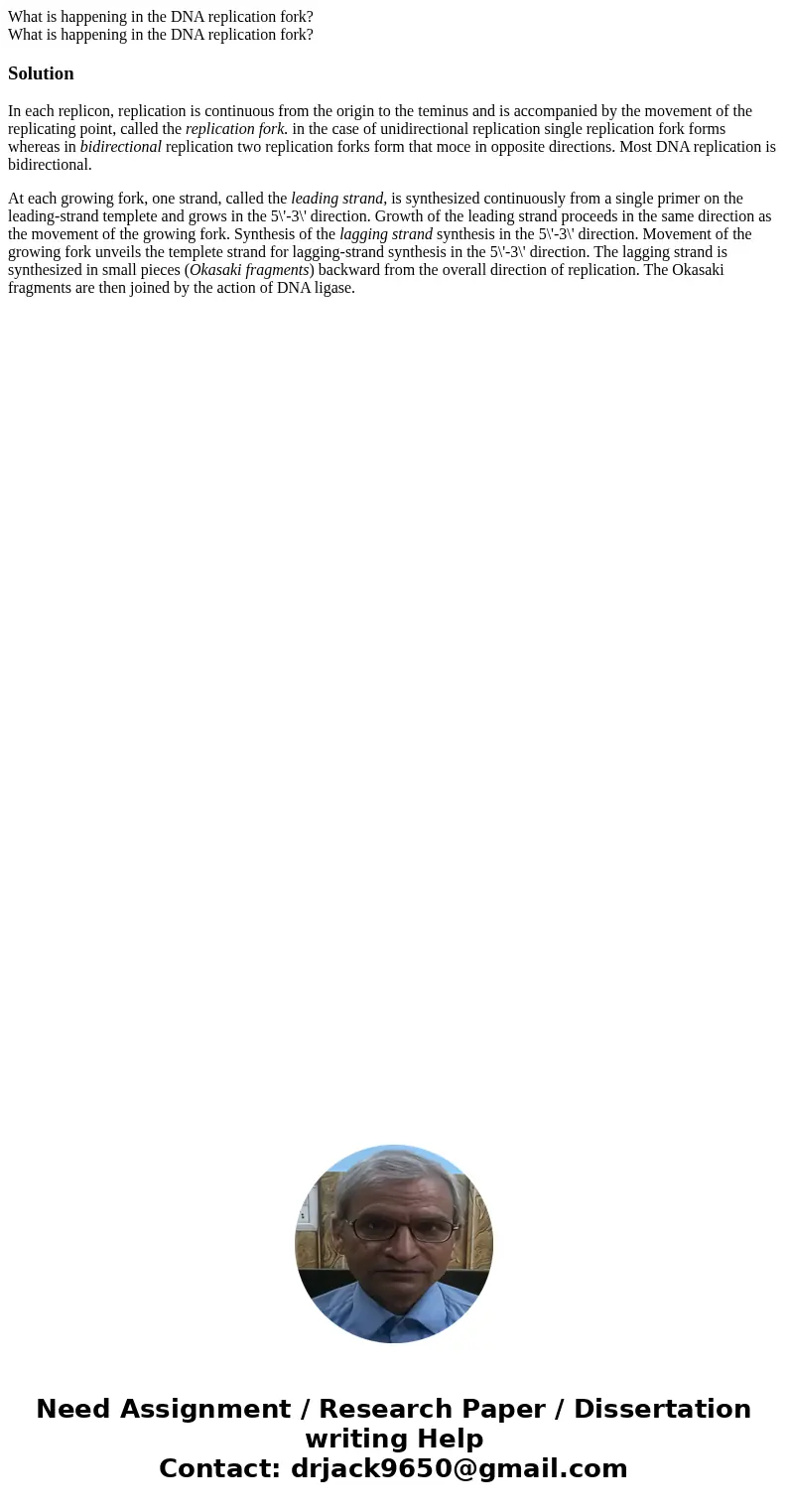What is happening in the DNA replication fork What is happen
Solution
In each replicon, replication is continuous from the origin to the teminus and is accompanied by the movement of the replicating point, called the replication fork. in the case of unidirectional replication single replication fork forms whereas in bidirectional replication two replication forks form that moce in opposite directions. Most DNA replication is bidirectional.
At each growing fork, one strand, called the leading strand, is synthesized continuously from a single primer on the leading-strand templete and grows in the 5\'-3\' direction. Growth of the leading strand proceeds in the same direction as the movement of the growing fork. Synthesis of the lagging strand synthesis in the 5\'-3\' direction. Movement of the growing fork unveils the templete strand for lagging-strand synthesis in the 5\'-3\' direction. The lagging strand is synthesized in small pieces (Okasaki fragments) backward from the overall direction of replication. The Okasaki fragments are then joined by the action of DNA ligase.

 Homework Sourse
Homework Sourse